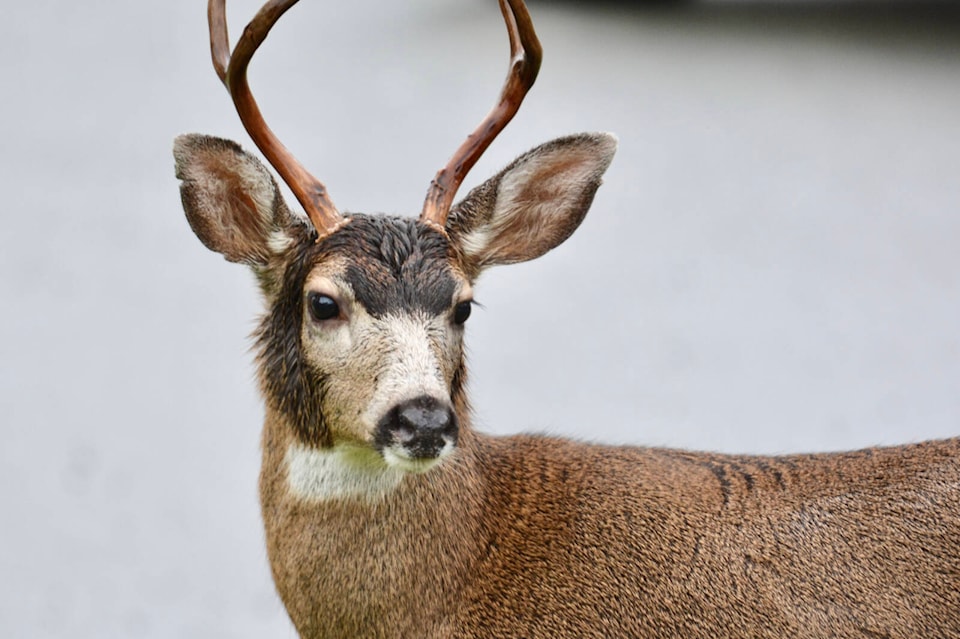You’re likely accustomed to seeing does strolling the neighbourhood with their offspring in tow, but it’s the bachelor bucks who come into focus this time of year.
And in focus for the bucks – or at least the focal point of their attentions – is their female counterpart.
Yes, along with cooler temperatures and falling leaves, November brings the free-flowing hormones of rutting season.
You may have already seen the viral video of a pair of Oak Bay bucks squaring off in a burst of bravado, going antler to antler in a bid to win the (ahem) heart of local does.
But rest assured, while dramatic, the deer really only have eyes – and sniffers – for each other.
So, what does this mean for us as we go about our less amorous business?
Here are a few timely reminders:
- Distracted by love – Buck behaviour during rutting season can seem unusual, but they’re really just single-minded as they follow the scent toward a doe. That DOES mean they can run out into the road, without noticing an approaching bike or vehicle. It’s important for drivers, cyclists and others to pay extra attention, especially around dawn and dusk, when deer tend to be more active.
- When driving, watch the roadside – Drive as though you were in a playground or school zone; pay extra attention and reduce speed, especially when driving in unfamiliar areas at dawn and dusk. Scan ahead, looking for movement or shining eyes at the roadside.
- When cycling, give yourself time and space – Take plenty of room so you can react to any unpredictable movement. If it’s safe to do so, pull out from the curb and give the deer a wide berth. Slow down, and just like a driver, scan ahead, looking for movement.
- When walking, keep your distance – While bucks are only interested in other deer, it’s best to keep your distance as you would with any wildlife.Because a deer’s natural response to danger is to run, always leave it an escape route away from yourself.
- When with dogs, keep them close and calm – No matter their size, dogs are perceived by deer as a potential threat. Always check your yard carefully for deer before letting your dog out. When walking, keep dogs on a leash and if you encounter a deer, keep your dog pulled in close to you, stop it barking if possible, and walk away from the deer.
Visit UWSS.ca for more information about avoiding collisions with deer and other deer behaviour tips. Learn more about the Township of Esquimalt’s deer management efforts here.
READ MORE: Fall brings the ‘perfect storm’ for drivers + deer: Here’s how to adapt
